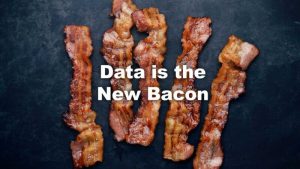The COVID-19 pandemic was a feast or famine season for many American businesses. From retailers to restaurateurs, some were forced to shut their doors permanently while others celebrated record sales. What set certain companies up for success while others fell behind? One word: e-commerce.
By the end of 2020, no one could claim ignorance of online ordering or curbside pickup, with Americans spending $ 790 billion on e-commerce – up 32% from 2019. Whether it was ordering groceries for delivery or purchasing a new car, shopping online was not just the safer option, but sometimes the only choice, as physical stores were closed and people sheltered at home.
Although brick-and-mortar stores have opened up their doors once again, the demand for e-commerce services isn’t going to retreat. The pandemic has forever altered the retail landscape, raising the bar for what customers expect from the online experience while pushing companies to accelerate their digital strategies.
Hybrid cloud powers shift to digital business
Americans were shopping online well before the pandemic, but as more consumers took to doing business from the safety of their home, companies have had to build their online presence and roll out new services that make it easier to browse and buy online. Big-box retailers double-downed on low-contact shopping options, such as buy online pickup in store (BOPIS), and more restaurants started offering curbside pickup through their app.
Faced with these dramatic shifts in market conditions and consumer behavior over the last year, companies are recognizing the need to optimize their e-commerce infrastructure for greater speed and agility without compromising security. That’s why many are turning to hybrid cloud.
Hybrid cloud model enables the deployment of different workloads in private IT environments or public clouds based on the computing needs. This gives an organization greater flexibility and more data deployment options to meet the needs of the business. For instance, a clothing retailer can tap the public cloud for launching a new website or customer app, but keep business-critical applications and sensitive customer data on premises, where it is safe behind a firewall.
Hybrid cloud helps meet surge in customer demand
In addition to food and household staples, many other unexpecting industries experienced spikes in online sales during the pandemic. For example, inventory at bike shops flew off the virtual shelves as people sought safe ways to spend more time outside of their homes. In April 2020, sales of lifestyle/leisure bikes grew by 203% and kids’ bikes compared to the same period last year.
Comparable to spikes in online traffic during the holiday season, a pandemic-induced boom in bicycle sales would ordinarily require significant time and spend to build the on-premise computer capacity that can handle such higher volumes of data. Having their IT systems in the cloud, however, enables retailers to ramp up capacity within hours or days rather than months, and to pay for only what they use.
One New York City bike shop owner, Priority Bicycles, was able to quickly adapt its physical store to a digital showroom and created innovative ways to enhance the virtual customer experience using cloud-based collaboration software. They launched virtual visits, inviting customers to schedule a one-on-one video session with a bike expert to help them choose the perfect bike.
With so much competition in the marketplace and increasing customer demand for a seamless online shopping experience, companies must recommit to their digital transformation if they want to preserve and grow their business. The speed and scale at which they are able to advance their digital strategies will separate the winners from the laggers – and the fastest route to winning is with hybrid cloud.
Digital & Social Articles on Business 2 Community
(41)






